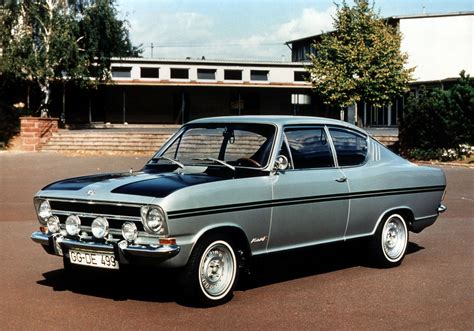Feelings of nostalgia arise when photos or videos of old car models and versions are spotted. Their fascinating body shapes, often paired with their awkward and loud noises, greeted you daily as everyone began their day.
At the time, these cars symbolized the financial status of their owners, with many believing they would continue to dominate our roads for years to come.
From unique body designs to non-circular gauges, ashtrays, and A-pillar vent windows, history is filled with once-common automotive features that have fallen out of favor with the rise of new technology. Today, our roads are crowded with 4x4s, luxurious saloon cars, electric cars, AI-supported cars, and self-driven cars.
Below, Letsridendrive takes a trip down memory lane as we revisit some of the cars that were immensely popular in the 1990s.
Nissan Sunny
The Nissan Sunny, popular in the 1990s, was often referred to as the “Sunny N13” in export markets. The Sunny was available in wagon, hatchback, or sedan, with the sedan being the most popular option in Ghana. Its low costs were maintained by features like a simple cabin and optional power steering. Used Sunnys were affordable, often costing a small portion of the price of a new car.

Nissans were popular in West Africa, making finding replacement parts easy. Local mechanics, or “fitters,” made makeshift repairs to keep this unique ride running for years. In Ghana, the Sunny was a workhorse and a reliable choice, especially when fuel costs were a concern. It was the type of car that a small trader, clerk, or teacher could own—useful rather than flashy.
Peugeot 504
Another king of the road in the 1990s was the Peugeot 504, a reputable vehicle known for its reliability. The Peugeot 504 was available in sedan, coupe, convertible, station wagon (break), and truck versions. The sedan was most popular in Ghana. The most common inline-4 engines in Ghana in the 1990s were 1.8L (1796 cc, ~80 hp) or 2.0L (1971 cc, ~95 hp).

Legend has it that the 504 was tough. Because it had basic mechanics and could withstand Ghana’s dusty roads, potholes, and occasional overloading without experiencing many breakdowns. In Accra, Kumasi, and Takoradi, the sedan was the most common type of taxi, although the wagon was the most common type of “trotro”. The fare in old Ghanaian pounds led to the nickname “one pound, one pound” along the Accra-Aflao route.
The sedan or wagon was preferred by families due to its dependability and space, while farmers utilized the pickup to transport commodities. Since they were old imports, 504s were inexpensive to purchase and rent. Nigeria had an assembly plant and a thriving second-hand market throughout West Africa, so spare parts were easy to find.
Opel Kadett
The Opel Kadett found its place among drivers navigating the economic and infrastructural realities of the time. In Ghana, the hatchback and sedan were more common, and the most popular models during this period were the Kadett D (1979–1984) and Kadett E (1984–1991), as these were widely available on the second-hand market by the 1990s. The Kadett offered a wide range of engines, including 1.2L (55 hp), 1.3L (60–75 hp), 1.6L (82–90 hp), 1.8L (84–115 hp), and 2.0L (115–150 hp, mainly for sporty GSi models). The most common petrol engines in Ghana were the 1.3L and 1.6L.
The Kadett D and E versions were inexpensive on the European used vehicle market by the 1990s since they were just 5 to 15 years old. Because they were cheap, Ghanaian importers attracted customers on a tight budget. Engines such as the 1.2L and 1.3L produced 30 to 40 mpg, which was good for the drivers because where fuel prices and economic restraints were a major concern in the country.

The simple mechanics of the Kadett made it appropriate for Ghana’s maintenance ecology. Some Kadetts were used as taxis, however, they weren’t as popular as the Peugeot 504 or Nissan Sunny. The Kadett E sedan, in particular, was prized for its dependability and efficiency.
It was the vehicle of the working professional who needed dependable transportation without going over budget, such as government clerks, teachers, or nurses.
Ford Sierra
Known for its unique rear-wheel-drive configuration and aerodynamic style, the Ford Sierra was less popular than industry mainstays like the Peugeot 504 or Nissan Sunny, but because of its durability, comfort, and affordability, Ghanaian drivers adored it. The first generation (1982–1987) and the facelifted version (1987–1993), which were imported from Europe, were the most popular cars in Ghana in the 1990s.
Compared to the sedan, the hatchback and estate were more popular. With 1.3L (60 hp), 1.6L (75–90 hp), 1.8L (90 hp), 2.0L (105–115 hp), and bigger 2.3L/2.8L V6 (up to 150 horsepower for XR4i versions) as well as a 2.3L (67 hp) diesel option, it offered a broad range of engine capacities.

Compared to competitors with front-wheel drive, such as the Opel Kadett, the Sierra’s rear-wheel drive system required more maintenance but had respectable handling.
The Sierra appealed to families or drivers looking to upgrade from entry-level vehicles since it had a more spacious and luxurious cabin than its little competitors, such as the Nissan Sunny. Urban users were drawn to it due to its comfortable seats and good sound isolation.
More expensive to fix.
The maintenance cost was not quite expensive, but Ghanaian mechanics could adjust. Their engines were thirstier (2.0L+), which was concerning considering the cost of fuel in the 1990s. With less clearance than high-riding cars like the Peugeot 504 wagon, it was less suitable for Ghana’s rural areas.
Hyundai Pony
The Hyundai Pony was useful for small enterprises and families. The four-door sedan and five-door hatchback were the most popular models in Ghana and they came with inline-four petrol engines from Mitsubishi: 1.2L (1,238 cc, approximately 55 horsepower), 1.4L (1,439 cc, approximately 68–70 horsepower), and 1.6L (1,597 cc, approximately 74 horsepower).

Although they existed, diesel versions were uncommon in Ghana, petrol was the primary fuel. By the 1990s, Hyundai had stopped producing Ponys (they were replaced internationally by the Excel in 1985), but used Ponys from Europe and the Middle East were flooding Ghana’s used car market.
The pony had simple engineering, was inexpensive, and was fuel efficient. The Ponys, however, were prone to rust. Compared to cars with more clearance, its basic suspension had trouble navigating Ghana’s toughest rural roads.
Other notable cars were the Toyota Corolla, Honda Civic, and Mercedes-Benz. While luxury brands like Mercedes-Benz were meant for the elite, the cars mentioned above were loved by Ghanaians for their affordability, reliability, and adaptability to the Ghanaian culture and environment. Today, these cars have been metamorphosed into luxurious versions, enhancing the living of the Ghanaian populace and beautifying our roads.




